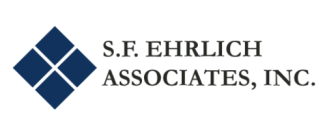
The 60/40 Portfolio is Dead. Long Live the 60/40 Portfolio!
June 30, 2021
If you’ve seen this movie before, raise your hand. Every year, business writers and market observers try to steer their audiences to their portfolio choices du jour. Small-cap growth? Dead! Large-cap value? Buy! International? Never! Emerging markets? Garbage! Bitcoin anyone?
With interest rates still trending near historic lows, the last year has seen a multitude of articles on fixed income, with some columnists even questioning why anyone would own any bonds. If they’re right, then why do we buy them for client portfolios?
The 60/40 portfolio is classic. It means 60% of assets are invested in equities, while 40% is invested in fixed income and cash. Of course, there are variations to the same theme: 50/50; 40/60; 80/20; et al. Typically, the greater the equity exposure, the higher the volatility. The higher the volatility, the more a portfolio will fluctuate. Thus, more equities means larger drops when markets fall.
Just like all equities aren’t created equal (small-cap, large-cap, value, growth, domestic, international, emerging markets, and more), neither is the case with fixed income. Fixed income includes bonds with short, intermediate, and long-term maturities, issued by both domestic and foreign entities. Like stocks, most bonds are traded on a minute-to-minute basis. Bonds that mature in 20 or 30 years typically fluctuate far more in price than bonds that mature in just a year or two.
In brief, the argument against owning bonds when interest rates are low is that investors will receive a low return on their fixed income dollars. That is indisputable. But, the reasons to own bonds are multiple, and they do not vary because interest rates are high, or low. Among the primary reasons investors own bonds is to: (a) reduce volatility in their portfolio, as bond prices (often) fluctuate less than equities; (b) provide a reliable source of cash for ongoing withdrawals, and (c) serve as a readily available cash reserve for unexpected events. In other words, bonds provide the fuel that keeps the engine running. While 25-year-olds may not have to worry about owning bonds in their 401(k) plans, older investors usually have cash flow needs that can only be met with a helping of fixed income in their portfolio.
Of course, some observers pitch owning dividend-paying stocks as opposed to low-yielding bonds. Frankly, that can work, until it doesn’t. The problem with depending on equities for ongoing cash needs is that when the markets go south, they drag good companies down with them. Even if you own good quality stocks that pay respectable dividends, you can potentially lose a lot of principal during a bear market. In fact, the losses may even be far greater than the dividends that the stocks were paying. When the spam hits the fan, owning boring bonds has kept many investors from losing sleep.
“There will be periods where stocks sink and returns are compromised, such is investing. But investors using a 60/40 portfolio shouldn't let the threat of rising interest rates lead them to more risky portfolios that could thwart their investing goals.” (“Long Live the 60/40 Portfolio” by Jason Kephart, Morningstar, May 6, 2021.) 1

